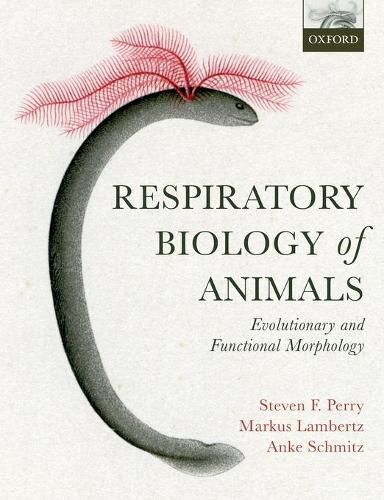Readings Newsletter
Become a Readings Member to make your shopping experience even easier.
Sign in or sign up for free!
You’re not far away from qualifying for FREE standard shipping within Australia
You’ve qualified for FREE standard shipping within Australia
The cart is loading…






Oxygen uptake for metabolic energy demand and the elimination of the resulting carbon dioxide is one of the essential processes in all higher life forms; in the case of animals, everything from protozoans to insects and vertebrates including humans. Respiratory Biology of Animals provides a contemporary and truly integrative approach to the topic, adopting a strong evolutionary theme. It covers aerobic metabolism at all levels, from gas exchange organs such as skin, gills, and lungs to mitochondria - the site of cellular respiration. The book also describes the functional morphology and physiology of the circulatory system, which often contains gas-carrying pigments and is important for pH regulation in the organism. A final section describes the evolution of animal respiratory systems. Throughout the book, examples are selected from the entire breadth of the animal kingdom, identifying common themes that transcend taxonomy.
Respiratory Biology of Animals is an accessible supplementary text suitable for both senior undergraduate and graduate students taking courses in respiratory biology, comparative animal physiology, and environmental physiology. It is also of relevance and use to the many professional academics requiring a concise but authoritative overview of the topic.
$9.00 standard shipping within Australia
FREE standard shipping within Australia for orders over $100.00
Express & International shipping calculated at checkout
Oxygen uptake for metabolic energy demand and the elimination of the resulting carbon dioxide is one of the essential processes in all higher life forms; in the case of animals, everything from protozoans to insects and vertebrates including humans. Respiratory Biology of Animals provides a contemporary and truly integrative approach to the topic, adopting a strong evolutionary theme. It covers aerobic metabolism at all levels, from gas exchange organs such as skin, gills, and lungs to mitochondria - the site of cellular respiration. The book also describes the functional morphology and physiology of the circulatory system, which often contains gas-carrying pigments and is important for pH regulation in the organism. A final section describes the evolution of animal respiratory systems. Throughout the book, examples are selected from the entire breadth of the animal kingdom, identifying common themes that transcend taxonomy.
Respiratory Biology of Animals is an accessible supplementary text suitable for both senior undergraduate and graduate students taking courses in respiratory biology, comparative animal physiology, and environmental physiology. It is also of relevance and use to the many professional academics requiring a concise but authoritative overview of the topic.